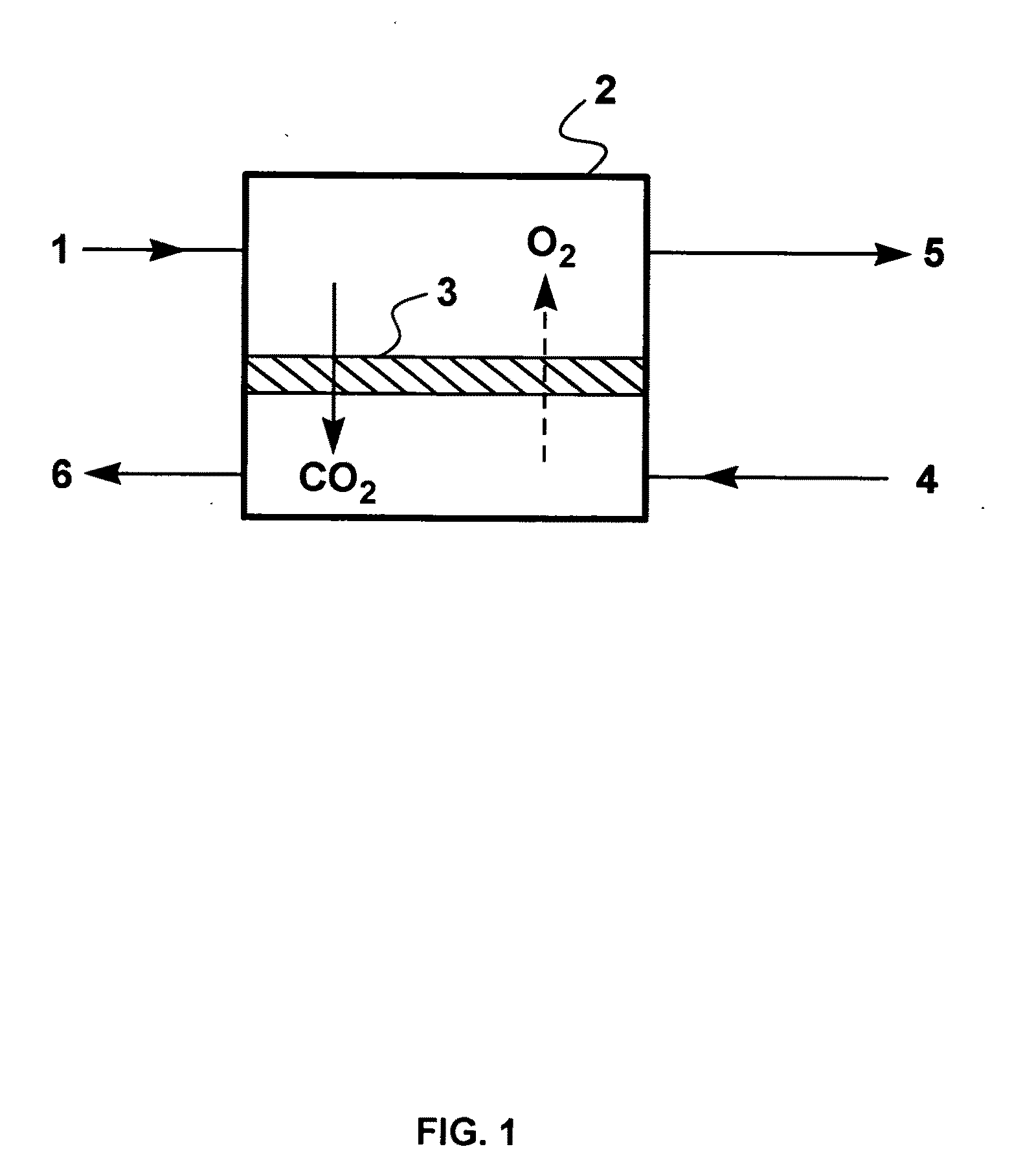Efficient gas-separation process to upgrade dilute methane stream for use as fuel
a technology of gas separation and methane, which is applied in the direction of separation process, liquefaction, lighting and heating apparatus, etc., can solve the problems of reducing the gwp of emissions and not providing any energy recovery
- Summary
- Abstract
- Description
- Claims
- Application Information
AI Technical Summary
Benefits of technology
Problems solved by technology
Method used
Image
Examples
example 1
Bases of Calculations for Other Examples
[0104](a) Membrane permeation experiments:[0105](i) A set of permeation experiments was performed with a composite membrane having a polyether-based selective layer. The pure gas permeation properties of the membrane as measured at 100 psia and 30° C. are shown in Table 1.
TABLE 2GasPermeance (gpu)*CO2 / Gas SelectivityCarbon dioxide1,000—Nitrogen2050Oxygen5020Methane5020Water**>2,000*Gas permeation unit; 1 gpu = 1 × 10−6 cm3(STP) / cm2 · s · cmHg**Estimated, not measured[0106](ii) A set of permeation experiments was performed with a composite membrane having a fluorinated selective layer, of the type described in detail in U.S. Pat. Nos. 6,361,582 and 6,361,583. The pure gas permeation properties of the membrane as measured at 100 psia and 30C are shown in Table 3.
TABLE 3GasPermeance (gpu)CO2 / Gas SelectivityCarbon dioxide160—Nitrogen325Oxygen1001.6Methane1610
[0107](b) Calculation methodology: All calculations were performed with a modeling program...
example 2
Process of the Invention
[0108]A calculation was performed to illustrate the treatment of a raw methane-containing gas stream according to the process of FIG. 1. The feed gas (stream 1) was assumed to contain 20% methane and 80% carbon dioxide; this composition is typical of a landfill gas stream at a later stage of operation, or of an off-gas from an amine absorption natural gas processing plant. The calculations also assumed that the feed gas to the membrane separation step was at 50 psig, again a typical representative number for landfill gas or various process off-gases.
[0109]Air at atmospheric pressure (stream 4) was assumed to be circulated on the other side of the membrane using a blower.
[0110]The assumptions for the membrane performance were as in Example 1(a)(ii).
[0111]The results of the calculation are shown in Table 4.
TABLE 4Stream1546ParameterFeedResidueSweepPermeate / SweepFlow rate (MMscfd)10.322.7Pressure (psig)505000Component (vol %)Methane2053.6—1.4Carbon Dioxide8032.8...
example 3
Not in Accordance with the Invention
[0117]A calculation was performed to illustrate a conventional two-stage process for treating raw natural gas containing 10 vol % according to the process flow scheme of FIG. 4.
[0118]It was assumed that the feed gas (stream 41) is available at 1,00 psia (985 psig) and that a pressure of 100 psia (85 psig) is maintained on the permeate side of first membrane separation unit, 43. It was further assumed that the first permeate stream (46) is recompressed to 1,00 psia, and that the permeate pressure for the second membrane separation unit is maintained at 50 psia (35 psig).
[0119]The assumptions for the membrane performance were as in Example 1(a)(ii).
[0120]The results of the calculation are shown in Table 5.
TABLE 5Stream46524145FirstSecondParameterFeedResiduepermeatepermeateFlow rate (MMscfd)2.28.83.41.2Pressure (psig)9859858535Component (vol %)Methane90987030Carbon Dioxide1023070Oxygen————Nitrogen————
[0121]The horsepower requirement to operate compr...
PUM
 Login to View More
Login to View More Abstract
Description
Claims
Application Information
 Login to View More
Login to View More - R&D
- Intellectual Property
- Life Sciences
- Materials
- Tech Scout
- Unparalleled Data Quality
- Higher Quality Content
- 60% Fewer Hallucinations
Browse by: Latest US Patents, China's latest patents, Technical Efficacy Thesaurus, Application Domain, Technology Topic, Popular Technical Reports.
© 2025 PatSnap. All rights reserved.Legal|Privacy policy|Modern Slavery Act Transparency Statement|Sitemap|About US| Contact US: help@patsnap.com



